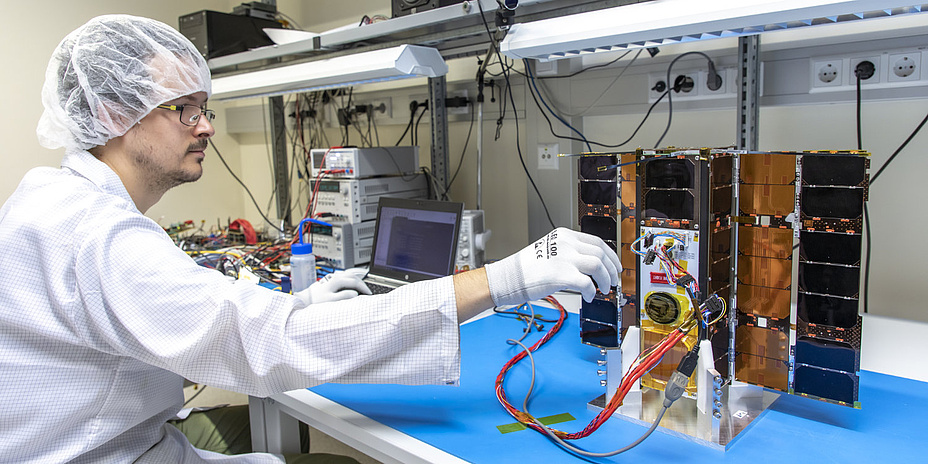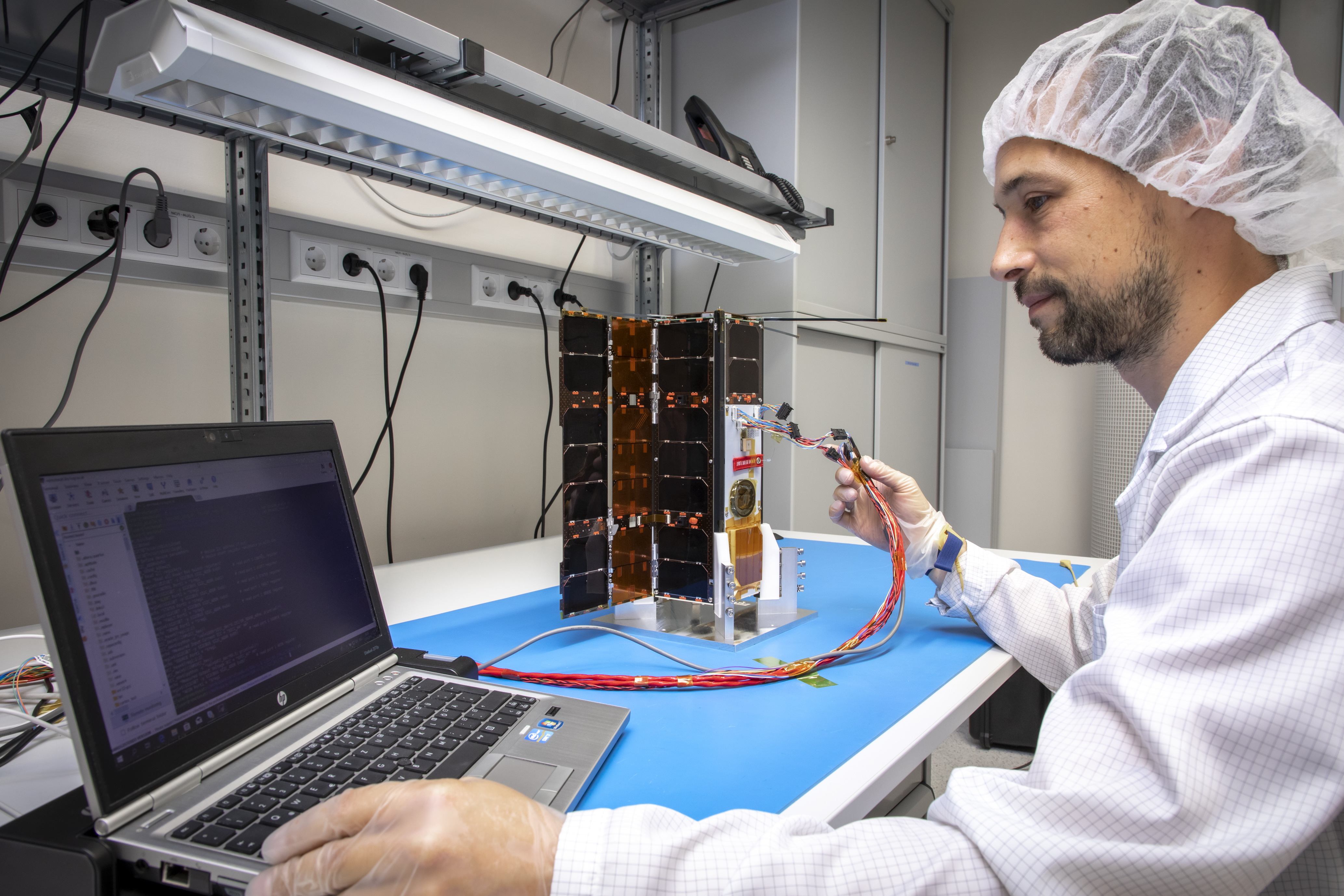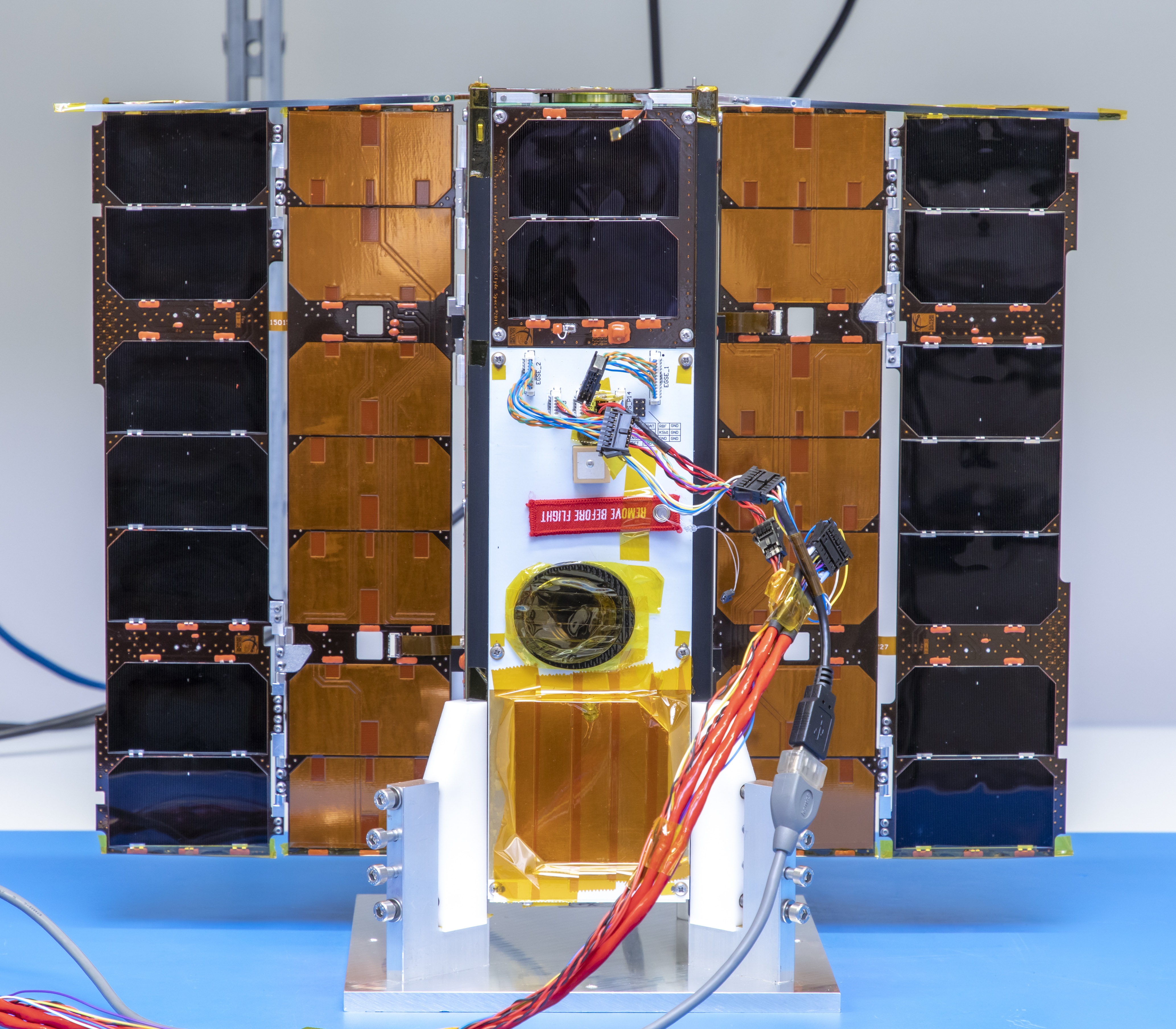Austrian Mini-Satellite OPS-SAT Burns Up after Successful Mission

OPS-SAT was launched into space from the Kourou spaceport in French Guiana on 18 December 2019. In the night from 22 to 23 May 2024, the nanosatellite built at Graz University of Technology (TU Graz) and operated by the European Space Agency (ESA) burned up on re-entry into the Earth's atmosphere. OPS-SAT sent its last signal to Earth as it flew over Australia. It was the end of an extremely successful mission to test new concepts and technologies.
Space agencies such as ESA usually rely on tried and tested components to minimise the risk for missions. OPS-SAT, on the other hand, was a test laboratory where ESA deliberately trialled new operating concepts and technologies in order to be able to use them for future missions. The engineers at the Institute of Communication Networks and Satellite Communications at Graz University of Technology were faced with the challenge of developing an extremely robust yet high-performance satellite. To do this, they configured a large number of different modules equipped with the latest hardware, which were monitored by an autonomous safety system so that they could be isolated or reset if necessary. This safety system allowed ESA to make its satellites available to universities, companies and other space agencies for testing without undue bureaucracy. A total of more than 250 scientific experiments ranging from remote sensing to cybersecurity were carried out within this framework.
Pioneer in AI applications in space
The nanosatellite had an extremely powerful processor – the so-called satellite experimental processing platform (SEPP), which was developed at TU Graz in cooperation with UniTel IT and enabled numerous applications, including the use of AI, directly on the satellite’s systems. This included, for example, the use of generative AI to improve the quality of images captured by OPS-SAT or to automatically recognise and track objects on the Earth’s surface. In March 2023, OPS-SAT was the first ESA project ever to win the ‘International Space Ops Award for Outstanding Achievement’, thereby also recognising TU Graz's expertise in satellite design. Currently, two more satellites from the TU Graz laboratories are in operation: PRETTY and TUGSAT-1/BRITE-Austria.
In addition to relevant research, OPS-SAT also served as a platform for the first share trading in space and the first chess game in orbit. The satellite played three games against an online community that voted on its moves. The fourth game had not finished when OPS-SAT burned up. It was also the first satellite to run the well-known computer game Doom. OPS-SAT also achieved a number of firsts outside of stock exchange transactions and games - a list of these has been compiled by on the Wikipedia website.
Even in its last days in orbit, the satellite made an important contribution to research. It also transmitted telemetry data via the UHF frequency, which helps ESA to calibrate atmospheric and dispersion models for low orbits. This makes it easier to determine the time and location of future re-entries. In addition to its own European Space Operations Centre in Darmstadt, ESA also asked the amateur radio community for help in order to be able to collect data during the entire orbit and not just when flying over Central Europe.
System reconfigured in space
Maximilian Henkel, who was involved in the mission almost from the beginning at the Institute of Communication Networks and Satellite Communications at TU Graz, has very personal memories of OPS-SAT. Among other things, he adapted and expanded the operating system to the requirements of the mission and the processor platform. He particularly remembers the beginning of 2021, when the mission came to a standstill because one of the two processor platforms was no longer working and the second platform had a faulty main memory. “This meant that both redundant platforms were no longer usable, so we had to carry out an in-orbit repair. As the actual main memory had a hardware problem, I had to redirect the processor to access the second main memory, which was not actually intended for this use. OPS-SAT then ran in this configuration until the end. This would not have been possible without the reconfigurability provided for its intended use,” says Maximilian Henkel, who recently completed his doctoral thesis on applications of reconfigurable hardware using the example of OPS-SAT.
OPS-SAT in detail:
OPS-SAT was a so-called 3U Cubesat (10 cm x 10 cm x 30 cm) weighing 4.6 kilograms, which orbited the Earth around 24,500 times from its original altitude of 515 kilometres during its slightly more than 1600 days in space. The fold-out solar cells had a surface area of 30 cm x 50 cm and supplied the satellite with an output of up to 24 watts. OPS-SAT communicated with the ground station in Darmstadt at data rates of up to 50 Mbit/s. The costs of the satellite and its launch totalled around 2.4 million euros.
Satellite research is part of TU Graz’s Information, Communication and Computing, and Mobility & Production fields of expertise, two of the university’s five scientific research focuses.
Would you like to receive the latest stories, news, research stories, interviews or blog posts from TU Graz directly on your smartphone or in your email inbox? Subscribe to the TU Graz Telegram newsletter free of charge.






